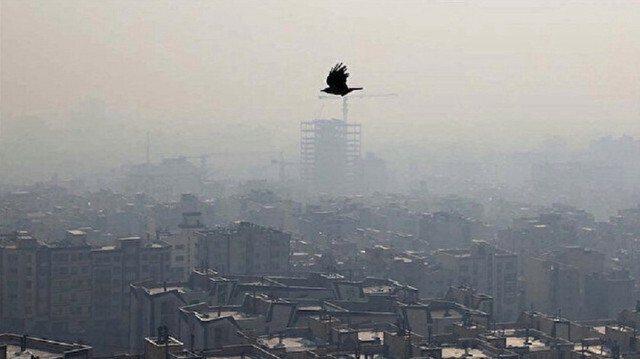
Air pollution assumed alarming proportions in Tehran in recent years
The rapidly deteriorating air quality in the Iranian capital Tehran and adjacent cities has forced the authorities to order closure of primary and secondary schools on Monday and Tuesday.
The classes, however, will be held virtually, officials said.
The school week in Iran is from Saturday to Wednesday, with Thursday and Friday being weekends.
Similar measures have also been taken for primary and secondary schools in the neighboring Alborz province, local officials said, as temperatures take the dip.
In a statement, Tehran Air Pollution Emergency Committee said a meeting was held on Sunday, and it was decided to close schools on Monday and Tuesday due to rising pollution levels.
The committee also announced that sports activities will be barred on these two days, while advising people to wear appropriate N95 masks to protect themselves from toxic air pollutants.
According to provincial officials, schools in central Isfahan and Arak provinces will also remain closed for two days in the wake of poor air quality.
Tehran has in recent years emerged as one of the most polluted cities in the world with poor air quality often forcing the closure of schools and businesses.
This year, the quality of air in the capital and other major Iranian cities recorded an alarming drop in the summer season. However, the problem has begun to aggravate with the onset of winter.
In July, the poor air quality forced the closure of all educational institutes and government offices in Tehran and other cities as the air quality index (AQI) was deemed unhealthy for all sensitive groups.
According to Iranian Health Ministry data released last month, in the last calendar year (March 2021-March 2022), the number of deaths caused by long-term exposure to PM2.5 particles surged by more than 87 percent compared to the same period the year before.
The study was carried out in 27 Iranian cities, including Tehran, Ahvaz, Mashhad, Tabriz, Shiraz, Isfahan and Hamedan with a population of 35 million people.
The alarming dip in air quality this year has been accompanied by the problem of sand storms, originating mostly in Iraq and Syria.
Hello, the comments you share on our site are a valuable resource for other users. Please respect other users and different opinions. Do not use rude, offensive, derogatory, or discriminatory language.
The floor is all yours.








